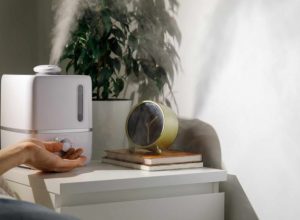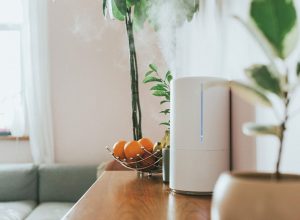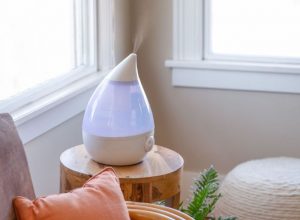Contents
The Importance of Humidity Control in Workspaces
Maintaining optimal humidity levels in your workspace is crucial for both health and productivity. The recommended indoor humidity level is generally between 30% and 50%. When humidity levels fall below this range, dry air can lead to a variety of health issues, such as respiratory problems, skin irritation, and increased susceptibility to infections. For instance, individuals may experience dry throat and itchy eyes, which can be particularly bothersome in environments where extended computer use is common. Furthermore, dry air can exacerbate conditions such as asthma and allergies, leading to decreased overall well-being among employees.
Conversely, excessively high humidity can foster the growth of mold and bacteria, creating an unhealthy environment that can lead to serious health concerns. Mold typically thrives in areas where the humidity is above 60%, leading to potential allergies, respiratory issues, and other serious health risks. Not only does elevated humidity create discomfort, but it can also significantly impact materials and equipment in the workspace; for example, excessive moisture can damage electronics and equipment, leading to costly repairs and downtime.
This is where a desktop humidifier becomes a vital addition to your workspace. A desktop humidifier can help in achieving and maintaining the ideal humidity level by effectively adding moisture back into the air. This proactive measure can not only reduce the likelihood of health-related issues caused by dry air but also improve overall comfort, leading to enhanced focus and productivity among employees. For those working in air-conditioned offices, where humidity levels are often lower, a desktop humidifier helps to create a balanced atmosphere, reducing static electricity and allowing for better moisture retention in plants and wooden furniture, thus preserving the integrity of the workspace.
In summary, addressing humidity levels directly correlates with workplace health and productivity. By integrating a desktop humidifier, organizations can foster a more pleasant, health-conscious environment that minimizes the risks associated with both low and high humidity conditions.
Why a Desktop Humidifier is Essential
A desktop humidifier serves as a vital tool in achieving and maintaining the ideal humidity level in your workspace. Here are several reasons why integrating one into your office setup is a practical choice.
Improved Air Quality
Dry air can lead to an increase in pollutants and irritants in the environment. A desktop humidifier helps by adding moisture to the air, which in turn can trap dust, allergens, and airborne bacteria, reducing their concentration. Just like how a sponge absorbs water, a humidifier captures these harmful particles, improving overall air quality.
Enhanced Comfort and Productivity
When humidity is maintained at an optimal level, individuals often experience enhanced comfort. Dry air can lead to dry skin, irritated eyes, and increased levels of stress. On the other hand, a properly humidified space helps keep your skin hydrated, reduces eye fatigue, and contributes to general well-being. Just as a well-watered plant thrives better, a well-hydrated workspace fosters concentration and productivity.
Protection of Equipment
Electronics operate more efficiently and have a longer lifespan when the humidity is controlled. Dry conditions can lead to static electricity that damages sensitive equipment. According to studies, the likelihood of static discharge doubles with each 10% decrease in humidity. A desktop humidifier helps alleviate these conditions, ensuring that your devices operate optimally without the risk of damage.
Reduction of Illness
Effective humidity control can significantly reduce the transmission of some illnesses. Viruses, such as the flu, tend to thrive in dry environments. Adding moisture to the air can help decrease the spread of respiratory viruses, making your workspace a healthier environment. It’s similar to how the presence of moisture in the atmosphere can limit the longevity of germs and viruses.
Types of Humidifiers
When selecting a desktop humidifier, you’ll encounter different types, each with its features and benefits. Understanding these can help you make a more informed choice.
| Type of Humidifier | Description | Pros | Cons |
|---|---|---|---|
| Evaporative | Uses a fan to draw air through a wet wick or filter. | Self-regulating; naturally adjusts output based on humidity levels. | Requires regular filter changes. |
| Ultrasonic | Utilizes ultrasonic vibrations to create a fine mist. | Quiet operation; energy-efficient. | Can produce mineral dust if the water isn’t distilled. |
| Steam Vaporizer | Boils water to produce steam, which is cooled before entering the room. | Effective for germ control; can help with breathing issues. | Energy-intensive; can become hot and pose a burn risk. |
| Impeller | Uses a rotating disk to fling water into the air. | Cool mist; typically quieter than other types. | May distribute mineral particles into the air. |
Conclusion
In conclusion, a desktop humidifier is a small investment that can yield significant benefits in a workspace. By enhancing air quality, promoting better health, and protecting electronic devices, it contributes to a more comfortable and productive work environment. Whether you are working from home or in an office setting, adding this appliance can greatly enhance your well-being and overall efficiency.




